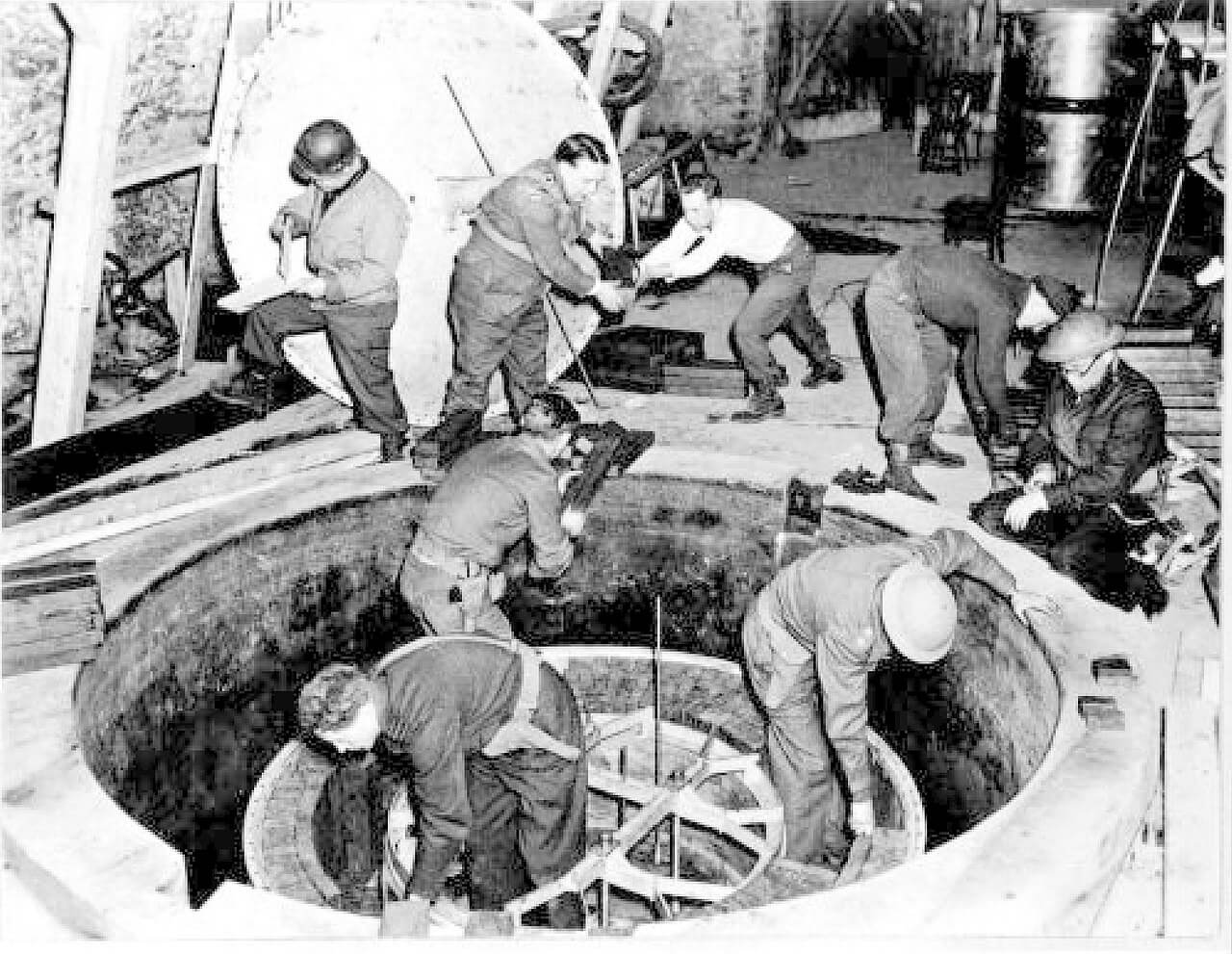Before it got to Nazi Germany, the Allies disrupted this plan and seized the uranium ingots that were at the heart of the plan. The fate of most of these ingots is unknown, but some of them ended up in the hands of the US and European countries. American chemists have developed a method to identify the mine from which the uranium came
[Translation by Dr. Moshe Nachmani]

During World War II, Nazi Germany and the United States competed with each other to obtain nuclear technology. Before it got to Nazi Germany, the Allies disrupted this plan and captured the uranium ingots that were at the heart of the plan. The fate of most of these ingots is unknown, but some of them ended up in the hands of the USA and European countries. Today, scientists are reporting preliminary results thanks to new methods developed to verify their origin. The new methods could also help track nuclear material that is transferred from country to country.
One of the uranium ingots ended up at the Pacific Northwest National Laboratory (PNNL), although no one knows how this happened. "We didn't know for sure that the ingots we had were part of Nazi Germany's nuclear program, so at first we decided to verify it," says the chief researcher. "In the next step, we compared the various ingots in order to classify their origin." In the early XNUMXs, a number of German scientists competed with each other to exploit nuclear reactions in order to produce plutonium from uranium for military use. German research teams included Werner Heisenberg's research group in Berlin and Kurt Diebner's research group in Goto. Uranium ingots were produced to fuel nuclear reactors at these sites. Hundreds of such ingots were immersed in "heavy" water and underwent a reaction in which deuterium atoms converted into hydrogen atoms. The scientists hoped that the radioactive decay of the uranium in these reactions would lead to a nuclear chain reaction - but this particular experiment failed.
US and British military forces captured some of Heisenberg's uranium ingots in 1945, and more than six hundred ingots were sent to the US. It is possible that some of them were used as part of the US nuclear weapons program - which was launched in part out of the fear that Nazi Germany was making successful progress in its military nuclear program - and some of them ended up in various research institutes and institutions. The whereabouts of other ingots, among them hundreds originating from Dibner's laboratory, is unknown. The PNNL research institute uses the samples in its possession to train the border guard forces as well as researchers in the field of nuclear weapons, in identifying nuclear material. It is believed that the origin of these ingots is in Heisenberg's laboratory, but this hypothesis is not verified. "We didn't have any practical measurements to support this assumption," says the researcher.
In order to determine the exact origin of the ingots, the researchers used an analytical method called radiochronometry, the nuclear version of a method used by geologists to determine the age of the samples in their hands based on the concentration of radioactive isotopes. When the ingots were produced, they contained mostly pure uranium metal. As time passed, radioactive decay converted some of the uranium atoms into thorium and protactinium atoms. The researchers adapted the analytical method used by geologists in order to more accurately separate and quantify the chemical elements in the ingots. The relative concentrations of the separate elements within the ingot will indicate the age of the complete ingot. In addition, within this method, the researchers will also be able to measure impurities of other elements.
The researchers will be able to uncover the mine where the uranium was mined, a finding that could point to the specific Nazi laboratory that was the source of the uranium. In addition, the researchers are testing the coating layer of the ingots designed to reduce the oxidation of the ingot. The researchers recently discovered that a uranium ingot located at the University of Maryland is coated with a layer of styrene - an unexpected finding since Heisenberg's research group used a coating based on cyanide and not styrene. At the same time, the research team discovered that some of the ingots from Dibner's group were sent to Heisenberg's laboratory. "We are curious to know if this particular ingot is one of the ingots used by the two laboratories in Nazi Germany," says the lead researcher.
- Following the agreement with Iran - everything about nuclear and uranium
- In the end, it's a story about two friends.
- The nuclear and us - questions and answers following the agreement with Iran
- Hitler and the atomic bomb he tried so hard to achieve
- A new method for neutralizing nuclear waste in groundwater

2 תגובות
In short *no* they said how do you know from which uranium mine...
It's nice that such technologies are being developed. Chemistry was once thought to be a dead science. And apparently, at least in relation to biology, they were right. But the last word has not yet been said